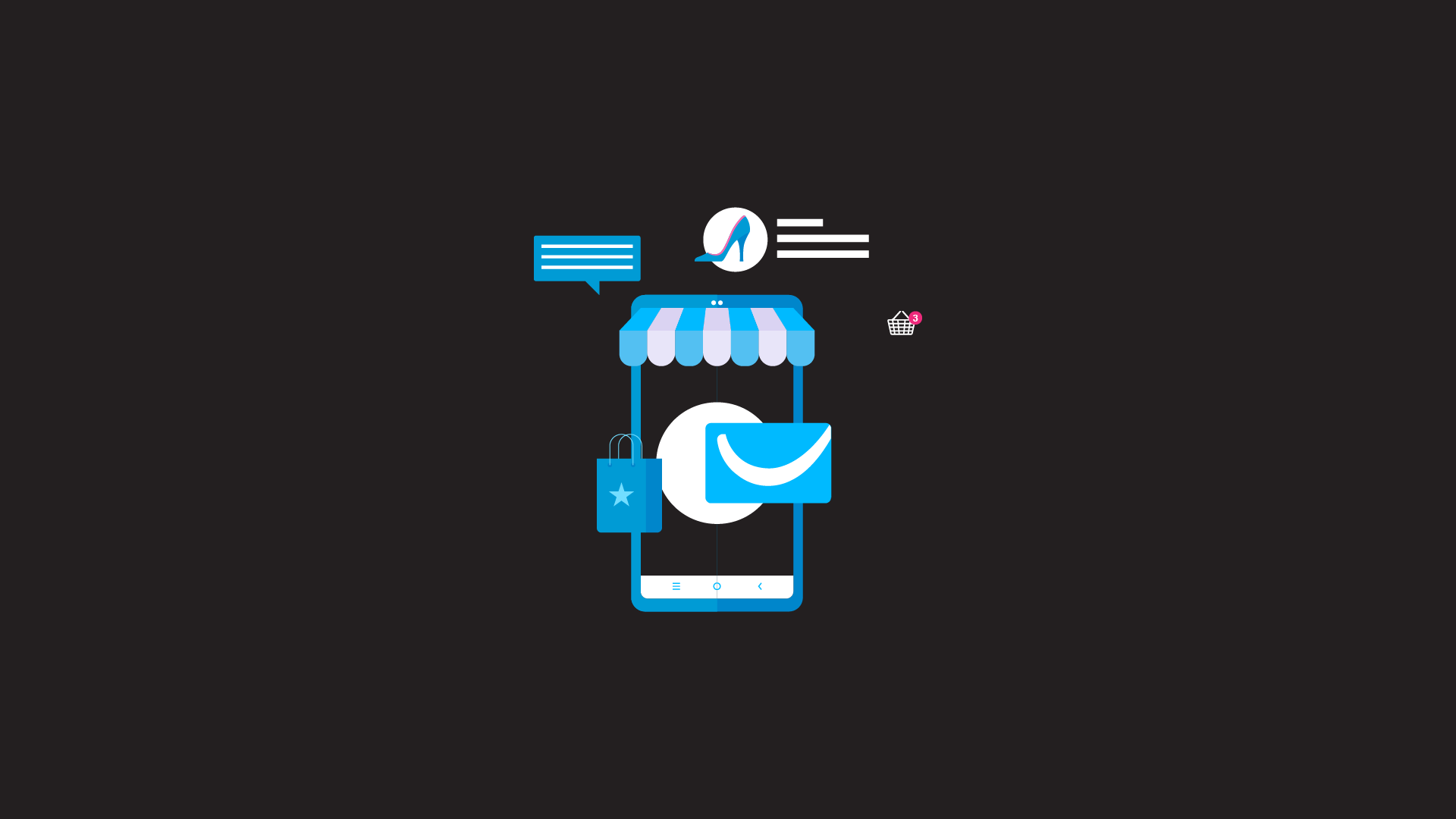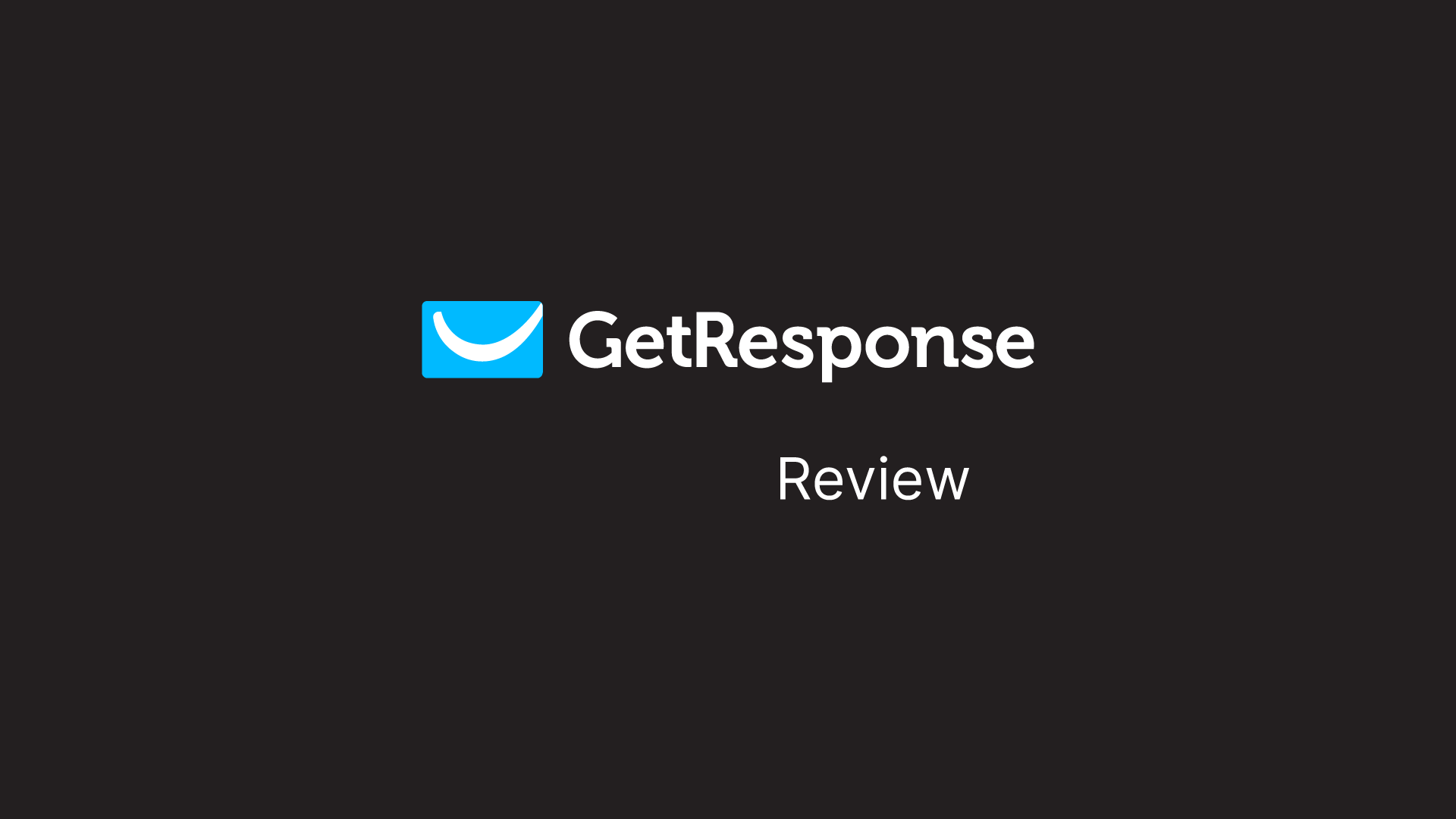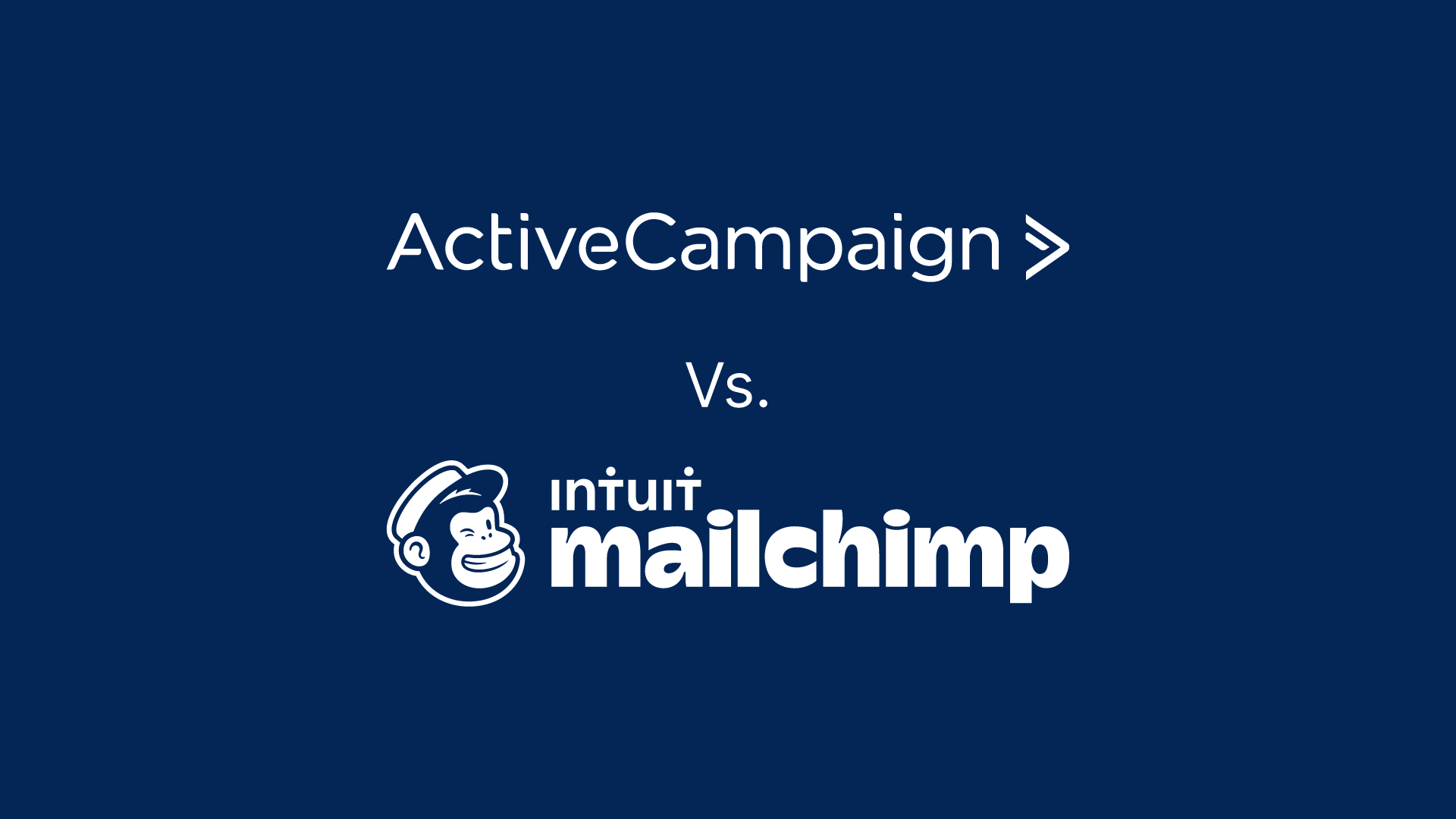When you send out emails to your subscribers, they get annoyed because they don’t see anything new or interesting. They also get irritated by the spammy messages sent by other companies. The reason is companies don’t use the right method to build an email list.
If you want to stay ahead of your competitors, then you should focus on creating high-quality content and give your audience the option to opt-in to receive emails from you.
How to build an email list from scratch? This question has been asked by many marketers who want to increase their sales and revenue.
In addition, a recent survey showed that 61% of consumers prefer receiving offers via email over social media.
To answer your question about how to build an email list is simple – you need to start by creating landing pages. But, before jumping into the ins and outs of list building, I will take you through why it’s important to even build a mailing list.
In this article, I am going to share my experience and give some useful tips on how to create a successful email list.
Depending on who you want to target there are several ways to do it. One effective method is to create a dedicated landing page to capture email sign-ups.
This blog post outlines some strategies you can use to build your email list.
What is an Email List?
An email list is a collection of people who have opted in to receive emails from you and/or your company.
Email lists are used for two main reasons – To keep track of customers and prospects and to communicate with them.
The first reason is very obvious. You can easily identify who has subscribed to your email list and who hasn’t. You can also segment your list based on different criteria such as location, gender, age, etc.
You can use these segments to send targeted emails to your subscribers.
Why Should you Build an Email List?
Building an email list is not just about signup forms and opt-in forms, an email list is one of the best ways to start marketing online. Not only does it provide a steady stream of leads and sales, but it helps you create better-targeted ads, landing pages, and brand awareness.
You can even use your lists to generate revenue by selling products directly to your audience. What makes it great is the fact that the people who you are sending to have opted in to receive email communication from your brand, which means they are ready to hear from you.
Here are some reasons why list building is such a powerful tool.
Why Building an Email List is Important
Building an email list is crucial for any online business or organization. It allows you to connect with your target audience directly and establish a personal relationship with them.
Email marketing is a cost-effective way to reach and communicate with customers, boasting an impressive average ROI of $44 for every $1 spent. By building an email list, you can develop a loyal customer base, market to individuals who already have a positive perception of your brand, and keep them engaged with your brand.
An email list provides a direct line to your audience, enabling you to share updates, promotions, and valuable content that keeps them coming back.
Unlike social media, where algorithms can limit your reach, emails land directly in your subscribers’ inboxes, ensuring your message is seen. This direct communication helps in nurturing relationships and building trust, which is essential for long-term business success.
Moreover, email marketing allows for personalized communication. By segmenting your list based on interests, behavior, or demographics, you can send targeted messages that resonate with each group. This level of personalization can significantly improve engagement and conversion rates, making your marketing efforts more effective.
Choosing the Right Email Marketing Software
Choosing the right email marketing software is essential for building and managing your email list effectively. The right tool can streamline your email marketing efforts, making it easier to create, send, and track your campaigns.
Look for software that stores contacts in a customer relationship management (CRM) system, integrates with other digital marketing channels, and offers features such as landing page builders, marketing automation, and A/B testing capabilities.
Some popular email marketing software options include Shopify Email, MailChimp, and Moosend. These tools offer a range of features that can help you grow and manage your email list.
For instance, MailChimp provides robust automation and segmentation options, while Shopify Email integrates seamlessly with your e-commerce store, making it easy to send personalized product recommendations.
When selecting an email marketing software, consider the size of your list, the features you need, and the cost. If you’re just starting, you might opt for a tool with a free plan or a low-cost option that offers essential features.
As your list grows, you can upgrade to a more comprehensive plan that includes advanced features like detailed analytics, advanced segmentation, and more.
Creating a Compelling Incentive
A compelling incentive is essential for encouraging website visitors to sign up for your email list. Offering something valuable in exchange for their email address can significantly increase your signup rates.
Consider providing a free ebook, webinar, or exclusive discount as an incentive. The strength of the incentive will determine the percentage of new subscribers, with 25-50% being a typical range.
Make sure the incentive is relevant to your target audience and aligns with your brand’s products or services. For example, if you run a fitness blog, offering a free ebook on workout routines or a discount on fitness gear would be highly appealing to your audience. The key is to provide something that your visitors find valuable and can’t resist.
Promote your incentive prominently on your website, using clear and compelling calls to action. Highlight the benefits of signing up and make it easy for visitors to understand what they will receive in return for their email address.
By offering a valuable incentive, you can quickly grow your email list and start building a relationship with your new subscribers.
Designing an Effective Signup Form
Designing an effective signup form is crucial for collecting email addresses from website visitors. Your form should be simple, user-friendly, and visually appealing to encourage signups.
Start with a clear and concise headline that grabs attention and explains the benefit of signing up. Use a simple and easy-to-use form that asks for minimal information, typically just a name and email address.
A prominent call-to-action (CTA) is essential to encourage signups. Use action-oriented language that clearly states what the visitor will get by signing up, such as “Get Your Free Ebook” or “Join Our Exclusive Webinar.”
Consider using a pop-up form or a scroll box to capture email addresses at the right time, such as when a visitor is about to leave the page or after they have spent a certain amount of time on your site.
Ensure that your signup form is mobile-friendly and easy to use on all devices. Many visitors will access your site from their smartphones, so a responsive design is crucial. Use A/B testing to optimize the form and improve conversion rates.
Test different headlines, CTAs, and form placements to see what works best for your audience. By continuously refining your signup form, you can maximize the number of email addresses you collect and grow your email list more effectively.
It provides a steady stream of leads.
When people sign up for your mailing list, they want to hear about what you do. They don’t want to waste their time reading something that isn’t relevant to them. So, make sure your emails are always interesting and helpful.
When you give them content they love, they will keep coming back to your content and buying your products. For every dollar spent on email marketing, you get about $35 back. And, because of the high return on investment (ROI), it’s a great place to market your products to relevant people.
It’s also good to note that when building your mailing list, make sure you are utilizing effective list building strategies to target the right audience for your products. This way you can convert them quickly into customers.
You’ll know exactly how many people opened each of your emails because you’ll have access to detailed analytics. This information allows you to target your marketing efforts much more effectively.
For example, you might send out a different offer to someone who visited your site recently versus someone who hasn’t been there in months.
With targeted landing pages and messaging, you can convince your audience that you are the right partner for their needs because you will be answering their problems with solutions.
It builds brand awareness.
People trust recommendations from friends, family, and colleagues. When you share content with your subscribers, you’re telling them that you’re trustworthy and knowledgeable. And when you consistently deliver quality content, they’ll come back for more.
They will even go to the extent of selling and sharing your products, and content with others who may not know about it. The more people know about your product through social media channels, the better the chances of your brand being recognized easily by your targeted audience.
It generates revenue.
There are plenty of ways to monetize your list. One option is to sell advertising and send an email blast to your list.
Another is to sell products directly to your audience via affiliate links. Or, you could charge a monthly subscription fee and then offer special promotions to those who pay. The sky’s the limit!
As a business when you have email subscribers you can generate revenue by sharing any changes in your products, and educating your audience about your industry.
While you do this, you can offer them products that are related to what you are teaching. Additionally, implementing a referral program can be an effective strategy to build your email list and increase revenue by incentivizing existing subscribers to share your newsletter with their networks.
It makes customer service easy.
Your customers will appreciate knowing that you care enough to keep them informed. Plus, they’ll feel appreciated and valued when you take the extra step to respond to every question or comment.
If you’re looking to build a successful online business, you need to start collecting email addresses now. You can use tools like MailChimp, Constant Contact, AWeber, GetResponse, and InfusionSoft to help you collect names and email addresses through an opt-in form.
Once you’ve collected all the data you need, you can begin sending out personalized messages to your new contacts.
A mailing list saves time.
Instead of sending multiple emails to different groups of people, you can simply add new members to your list. Then, as part of your list building strategy, you can segment your list based on interests, demographics, behavior, and location.
This means you can send personalized emails without having to write separate messages.
It increases conversions.
The more engaged your audience is, the more likely they are to convert into paying customers. That’s why it’s so important to nurture relationships over short-term gains.
If you send too many emails, people may unsubscribe. But if you send just the right amount, people will stay subscribed. When you build a mailing list you are giving your audience an opportunity to opt into your list making them engaged in your content.
Consider using pop up forms or a scroll box to capture email addresses at the right time, such as when a visitor is about to leave the page or after they have spent a certain amount of time on your site.
Well-designed pop-up forms can capture visitors’ interest, provide a sense of urgency, and boost conversion rates significantly when tailored to specific themes or offers.
The longer people stay subscribed to your email list, the more valuable they become. As long as you continue to provide useful content, they’ll be happy to give you their contact info.
It helps you build credibility and gives you great testimonials.
When people see that you’ve taken the time to ask for their feedback, they’ll think of you in a positive light. After all, you wouldn’t ask for permission otherwise would you?
When people love what you do and recommend it to others, it creates word-of-mouth marketing. People will talk about your business, which will increase your visibility and help you grow your following.
Implementing referral programs can further enhance this effect by incentivizing existing customers to share recommendations with their networks, thereby building trust and loyalty.
Get the best out of Your digital Channels
Create personalized all to actions
Create a pop-up or slide-in for each page of your site
Use a timed pop-up survey
Use humor or sarcasm in your CTA’s
Describe value in your CTA
Pitch your email newsletter on your social media accounts and Email Signature
Create more landing pages
Encourage everyone to sign up immediately
Include a CTA on your About Us page
Try a scroll box
1. Create Personalized Call to Actions
Personalization is one of the most effective tools marketers use to improve conversions. When done correctly, personalization increases conversion rates by 42% according to research conducted by HubSpot.
This is because people are much more likely to buy from someone they like and trust. In fact, studies show that customers are willing to pay up to 20% more for products that come directly from friends or family.
To make sure you’re getting the maximum benefit from personalization, consider implementing a few strategies across each channel. For example, you could include a unique offer code in your welcome email, add a special discount code to your Facebook posts, and even ask your Twitter followers to retweet your tweets.
While some companies still struggle with how to implement a successful marketing strategy, others are able to leverage their existing data to deliver highly targeted messages. If you’ve been struggling to find success, here are eight tips to building an email list from scratch.
Your goal is to collect email addresses, not to sell anything. You don’t want to waste anyone’s time, so start off by asking questions about your potential customer’s interests and needs. Once you understand what they’re looking for, you can craft a message that helps them achieve their goals.
The first step in building an email list is sending a welcoming email that explains what you do and why it matters to your readers. Include a clear call to action such as a link to download a free guide or sign up for a webinar. Make sure you include information about your brand’s mission and values.
2. Create a pop-up or slide-in for each page of your site
Website pop ups are one of the most effective ways to increase conversions and sales. They let customers know that you care about them and provide value. But creating a great pop-up isn’t always easy. Here are some tips to help you make it happen.
Who are you trying to reach? What do they want? How much information can they handle? You don’t want to overwhelm anyone with too many options. Keep things simple and clear.
What goals are you trying to achieve? Are you looking to convert someone into a customer? Or maybe you just want to give away free stuff. Whatever your goal is, think about how you can use pop-ups to accomplish it.
You want to offer something of value to your audience and be clear about the value you are offering. If you aren’t offering anything of value, why should they pay attention to what you say? Think about what makes your product unique and what benefits it provides over similar products.
3. Use a timed pop-up survey
Timed popup surveys are one of the most effective ways to capture the email addresses of potential customers. They give prospects something to do while they’re waiting for you to respond to their initial contact.
In addition to increasing conversion rates, timed popups help you build trust and credibility. By offering a limited window of opportunity to provide feedback, you show that you value people’s opinions and are willing to make changes based on what they say.
You can set the pop-up survey 10s so that when a user spends 10s on your page they get the survey. After the 10s window, the viewer sees a small box asking them to complete a short survey about their interest in receiving information from your website via email.
Once they’ve completed the survey, they’ll receive an email inviting them to subscribe to the newsletter.
So make it an engaging process so you get more people who are committed to knowing more about what you offer and what to receive emails from your brand.
4. Use humor or sarcasm in your CTA’s
Humor and sarcasm work well in marketing because it makes us feel good. We want to believe that we matter.
When someone says something funny, we laugh. But most importantly, we trust them. They’re being sincere. And we know that they really do care about our needs.
The same goes for when someone uses sarcasm. If someone tells me “No, thanks,” it will be difficult for me to turn the offer down.
But why is that? if your call to action is just a simple yes or no, it doesn’t remind your audience what they might be missing, but, if you added more to the yes or no, they are more likely to go with a positive response.
5. Describe value in your CTA
A call-to-action (CTA) is one of the most important parts of a landing page or email campaign because it tells visitors what you want them to do next. But too often, CTAs don’t clearly explain the benefits of clicking.
They’re vague, ambiguous, or even misleading. In fact, some CTAs aren’t even worth clicking because there’s no real benefit to doing so.
In this article, we’ll show you how to make better CTAs that actually help people convert. We’ll start with five tips for writing effective CTAs. Then, we’ll take a look at four types of CTAs and how each one affects conversions.
Finally, we’ll give you examples of good and bad CTAs. By the end of this guide, you’ll know exactly what makes a great CTA and how to write one yourself.
The first step toward making a great CTA is to figure out what value proposition you want to offer. The value you offer goes a long way in helping your build an email list faster. This is the main reason why someone might come to your site or open your email.
6. Pitch your email newsletter on your social media and Email Signature
Your email signature is an important piece of your marketing strategy. A recent study found that people are more likely to open an email sent from someone they already know.
So, you want to make sure that your email newsletters are being seen by potential customers. You can do this by including it in your social media posts and email signatures.
You don’t necessarily have to pitch every single one of your products or services in every post. But, you should include some sort of call to action in your social media posts.
This could be something simple like asking followers to subscribe to your email list. Or, it could be more complex like offering a discount code. Whatever you decide to do, just make sure that you are consistent across platforms.
If you’re looking to build up your email subscriber base, you might consider creating a separate email address for your newsletter. This way, you won’t lose subscribers if they change their email provider or forget about your mailing list.
7. Create more landing pages
Landing pages are great for promoting new projects, products, or services. They provide a way to capture leads, collect emails and build trust among potential customers. But creating a landing page isn’t always easy.
You’ll want to make sure it’s optimized for conversions while keeping everything simple. Here are some tips to help you create a successful landing page.
Your landing page needs to clearly communicate the benefits of the product or service you’re offering. If you don’t understand what people are looking for, you won’t be able to offer a solution to their problem.
Start by asking yourself questions like “What do I want my audience to take away?” and “How does this benefit me?”. Then write down your findings.
A landing page shouldn’t be longer than one screen. Don’t try to tell too much in one place. Instead, break up your copy into bullet points and lists. This helps keep things organized and makes it easier for readers to scan and absorb information quickly.
The most important thing you can include on a landing page is something that encourages visitors to take action.
Calls to action work well because they give visitors a reason to act. For example, you could ask visitors to sign up for your newsletter or download a white paper by filling out a form.
8. Encourage everyone to sign up immediately for collecting email addresses
When it comes to email marketing, there are three things you absolutely must do every single day:
Send emails.
Get feedback.
Do something about it.
If you don’t do those three things every single day, you’ll never grow your list. You’ll never know what works and what doesn’t. And you won’t ever make progress towards building your business.
It lets you view your lists, segment them into different groups, send automated messages based on certain criteria, schedule messages to go out later, etc. But most importantly, it helps you track how well each email campaign is performing.
9. Include a CTA on your About Us page
The about us page is one of the most important parts of your site because it tells visitors what you do and how they can contact you. This is where you want to give people information about your products or services.
You don’t want to overwhelm them with too much text, so make sure you include a clear call to action.
You’ll find that some companies use a simple “Contact Us” button while others go a step further and add a subscription box or even a newsletter sign-up. Either way, make sure you include a CTA on your about us page.
10. Try a scroll box
Scroll boxes are one of those things you think about doing but never actually implement. Why? Because they seem like spammy behavior.
But there’s no reason why you shouldn’t use them. In fact, they can help boost conversions by encouraging readers to continue reading.
A scroll box is just a box that appears at the bottom of a web page. You can put anything inside it, including text, images, videos, buttons, etc.
What makes them different from regular popups is that they don’t interrupt the flow of the page. Instead, they let visitors know that there’s more information available. This encourages them to keep scrolling down the page.
The best part is that scroll boxes aren’t hard to set up. All you need is a plugin and some HTML code. Once you do that, you can start adding them to your site today.
Build an Email List and Nurture Relationships with Email Marketing Software
Email list building is still king. In fact, it’s one of the most effective ways to build a brand and increase conversions. But there are some things you need to know about email lists before you start sending emails.
First, you have to figure out who your audience is. Then you’ll need to create content that will appeal to them. And finally, you’ll need to get their attention by using creative tactics such as email marketing
Once you’ve done all this, you’ll be able to start growing your list and getting results.
Use one of these best email marketing tools to ensure you comply with email marketing data regulations.
Frequently Asked Questions about Building an Email List from Scratch
How do you build an email list from scratch?
Building an email list from scratch involves several key steps. Start by choosing the right email marketing software to manage your list. Create compelling incentives like a free ebook or exclusive discounts to encourage signups.
Use dedicated landing pages and effective signup forms to collect email addresses. Promote your list on social media platforms and through your email signature. Engage with your audience by sending valuable content regularly.
How much is a 1000 email list worth?
The value of a 1000 email list can vary depending on your industry, the engagement level of your subscribers, and the effectiveness of your email marketing strategy.
On average, email marketing has an ROI of $44 for every $1 spent. With a well-targeted list, you can generate significant revenue through direct sales, affiliate marketing, or by selling advertising space in your emails.
How to create a mass email list?
To create a mass email list, focus on building a strong foundation with a dedicated landing page and effective signup forms. Use marketing campaigns and social media channels to drive traffic to your signup forms.
Consider offering lead magnets like free ebooks or webinars to entice potential subscribers. Ensure that your email marketing software can handle large lists and offers features like segmentation and automation.
How to build a mailing list for free?
Building a mailing list for free involves leveraging organic strategies. Use social media platforms to promote your signup forms and encourage followers to join your list. Utilize your website by adding opt-in forms and pop-ups.
Offer valuable content, such as a free ebook, to incentivize signups. Attend in-person events or partner with other businesses to capture email addresses from potential customers.







